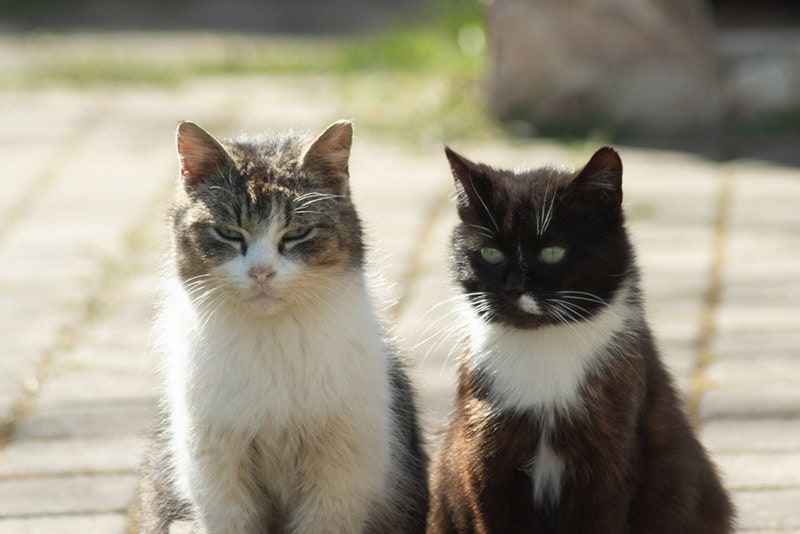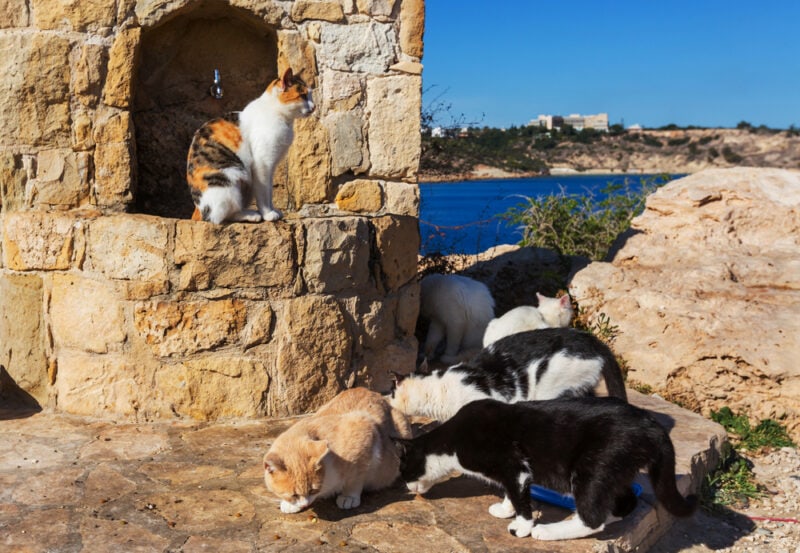
DNA studies have now made it possible to research just what cats evolved from, which was impossible to do beforehand. The classification of the Felidae family is difficult because of the similarities—even experts had a difficult time differentiating a lion skull from a tiger skull. However, through DNA studies, we know now eight lineages lie within the Felidae family.
So, what did cats evolve from? It’s believed that all cats evolved from one of two (or both) cat-like predators that first emerged about 25 million years ago: the genus Proailurus and Pseudaelurus. To this date, the exact evolutionary tree (also known as a phylogeny) of cats is not precisely known.
How Long Have Cats Been Around?
Cats have been around for at least 25 million years or so. Not much has changed regarding their physiology, as the cats we know and love today share similar predator features to their ancestors. However, we do not know the exact location and timeframe of when and where our pet cats evolved from, as some studies suggest they have been around since the ancient Egyptian civilization era. These cats were known as Felis sylvestris lybica, or African Wildcats.
It’s believed that Egyptians became fascinated with wild cats when they discovered how much these creatures could contribute to society by killing venomous snakes and protecting the pharaoh. Scientists believe Egyptians worshiped cats and even mummified them following their deaths—drawings of cats have been discovered on walls of Egyptian pyramids. In addition, several ancient Egyptian deities were depicted with cat-like heads and represented a desired human trait. These include Mafdet (justice), Bastet (fertility), and Sekhmet (power).
Cats have evolved into 41 different species within the Felidae family, which were initially placed into three different families:

How Did Cats Become Domesticated?
The domesticated cat comes from Felis catus, the most recently evolved species of cat. It may come as no surprise that cats domesticated themselves. Two lineages of cats—the European Forest Cat (Felis silvestris silvestris) and the North Africa/Southwest Asia wildcat (Felis silvestris lybica)—do not have a strong social hierarchy, which makes them unlikely to have been domesticated by humans.
Humans had no desire to bond with cats until it was discovered how valuable cats are to communities, and cats realized the prize gained by being around humans, which was the abundance of prey. In short, roughly 10,000 years ago, mutual benefits allowed cats to domesticate themselves, and the rest is history.
How Did Domesticated Cats Come to America?
Disease was rampant during the 15th and 16th centuries, and cats were welcomed aboard cargo ships coming to America from Europe to help minimize the threat of disease and vermin. Some even believe cats were aboard Christopher Columbus’s ship when he discovered America and the American Shorthair is thought to have originated during this time when cats flourished after arriving.

How Have Cats Helped Humans Throughout History?
Ever since their domestication, cats have offered humans several benefits throughout history.
Conclusion
While we don’t know exactly where cats evolved, we do know that they have been around for millions of years, and their predatory prowess has not changed all that much. Cats are independent creatures, and it’s no wonder they domesticated themselves. Cats were an invaluable asset in ancient times by keeping rodents away, which also kept disease and vermin at bay. Though they rarely perform this role these days, they nonetheless remain very useful for humans and have shown to assist those with certain conditions or ailments.
Featured Image Credit: Arina Krasnikova, Pexels







